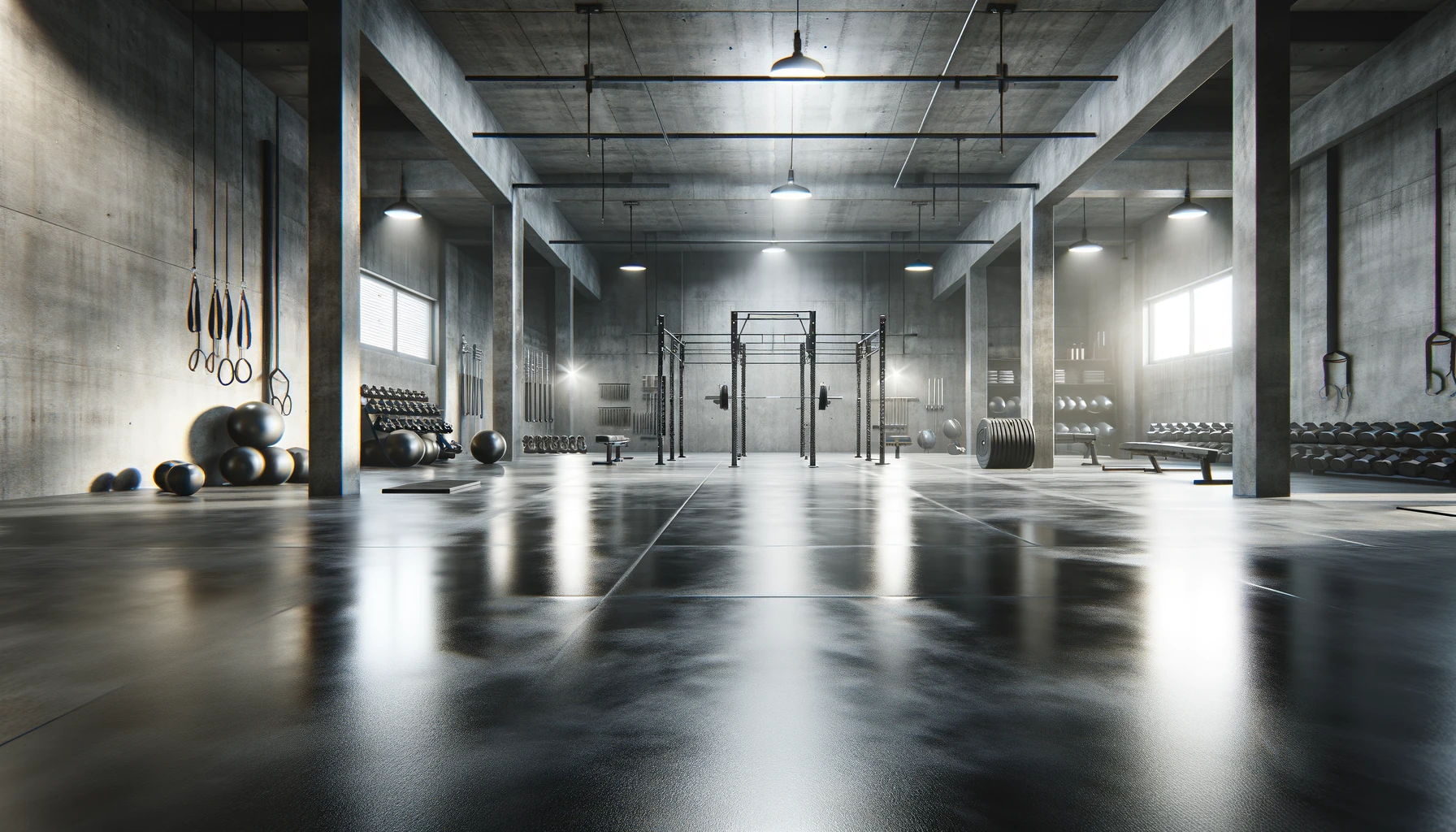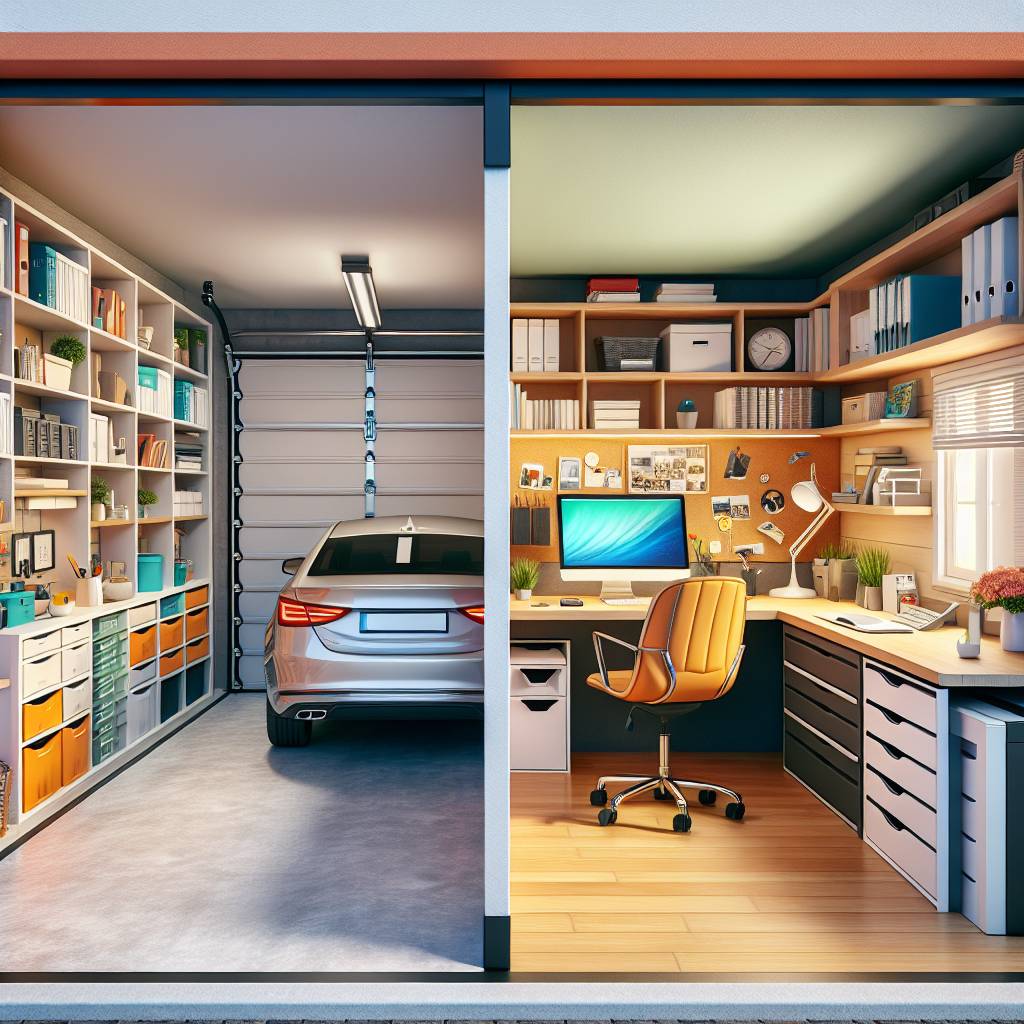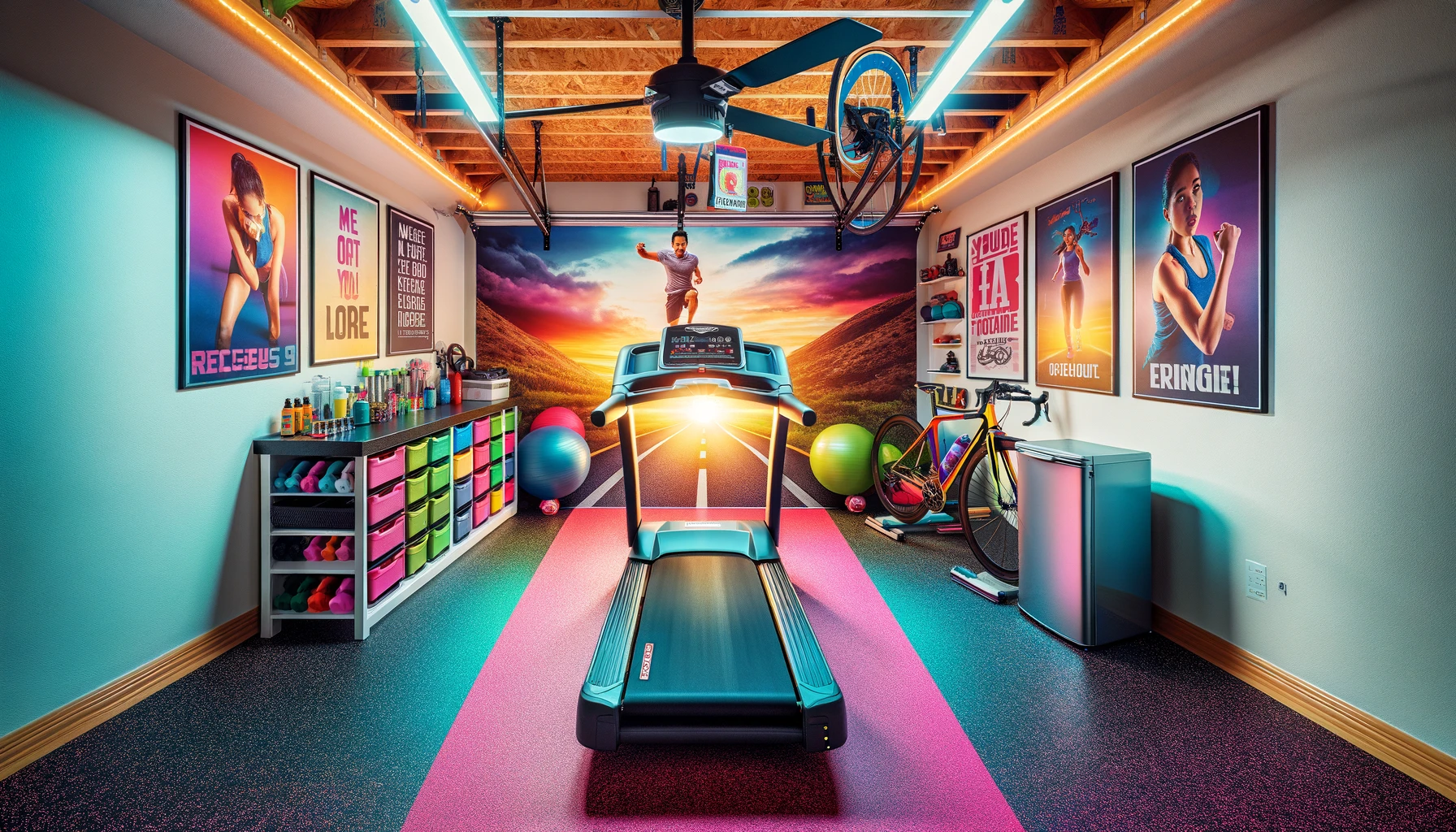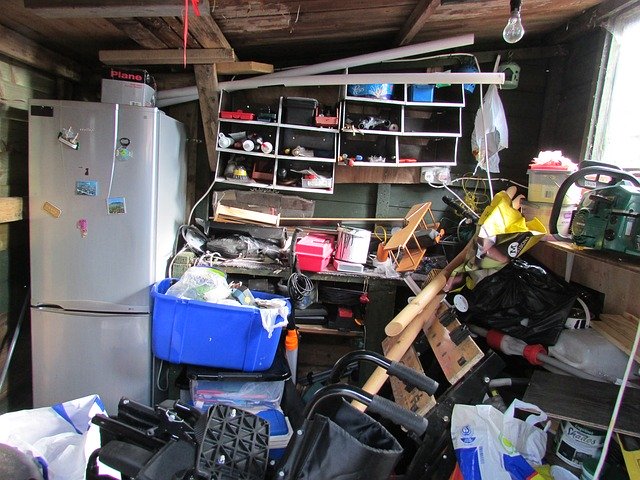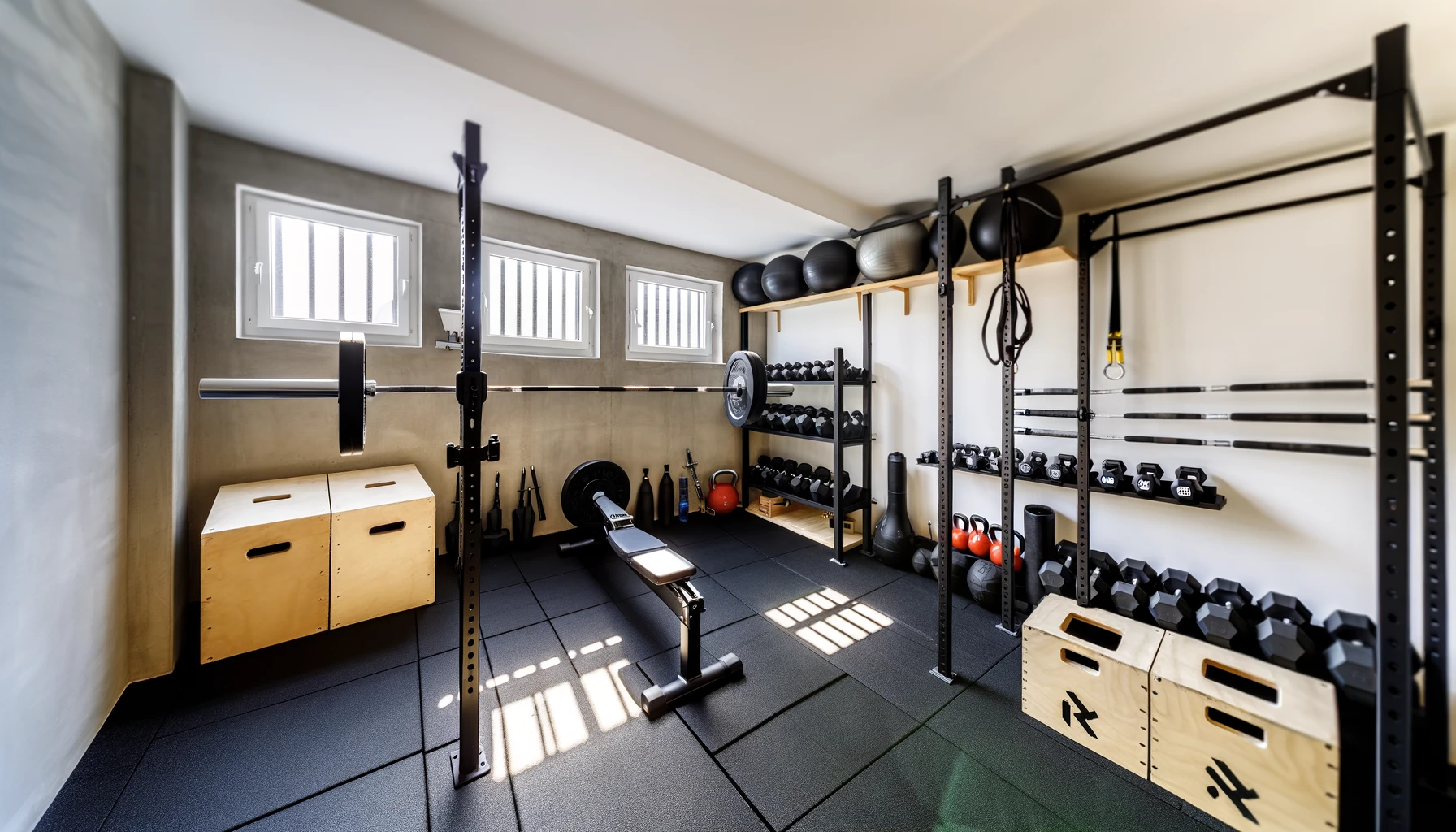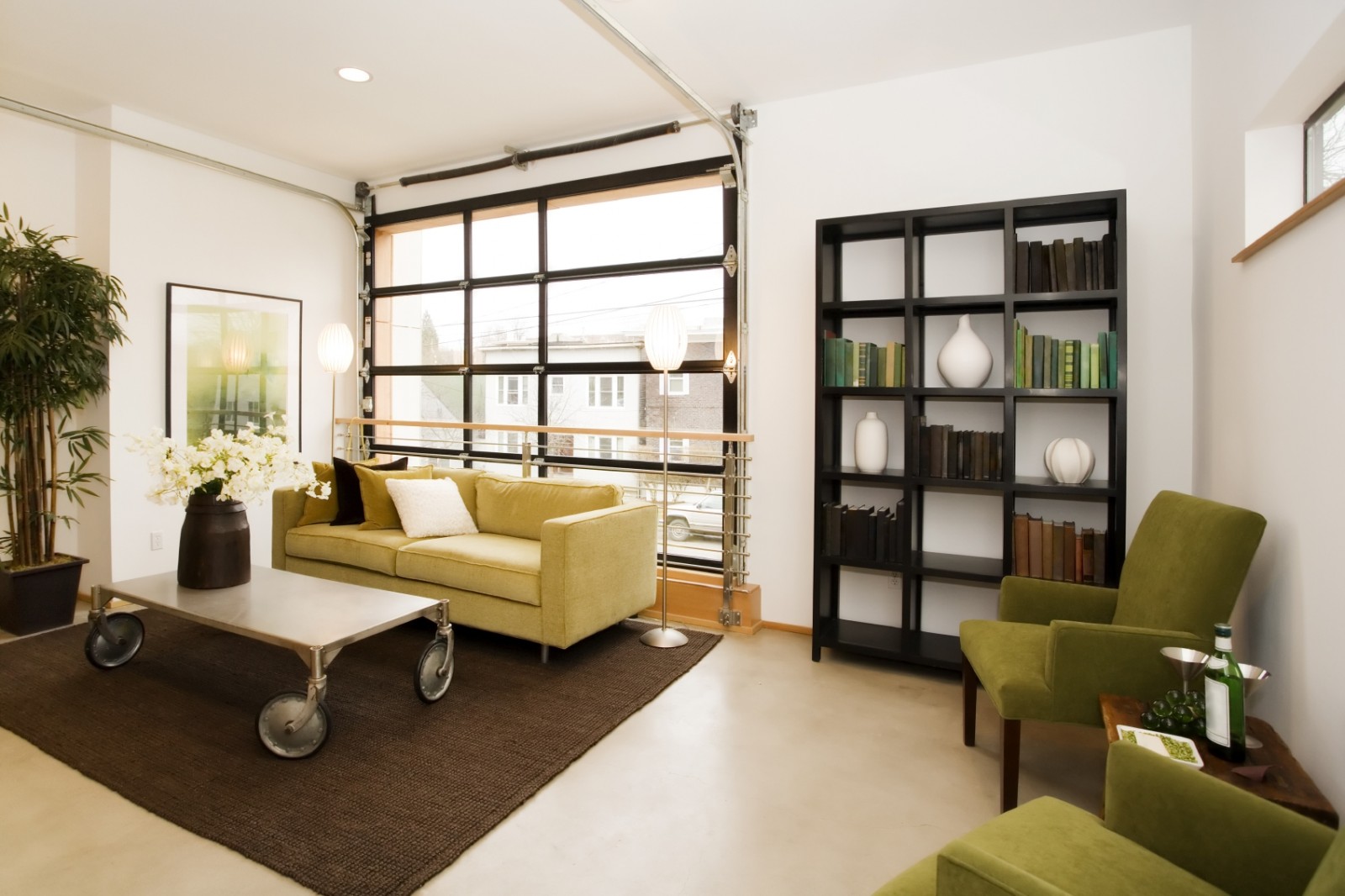Welcome to the ultimate guide on garage gym flooring essentials. Whether you’re a fitness fanatic or just starting your home gym journey, choosing the right flooring is crucial. From protecting your equipment to enhancing your workout experience, the right floor can make all the difference. In this comprehensive post, we’ll delve into everything you need to know about garage gym flooring options, durability, installation tips, cost considerations, and home gyms.
Get ready to transform your space into a functional and stylish workout area that suits your needs and preferences perfectly. Say goodbye to slipping on slick floors or damaging surfaces during intense workouts – with the right vinyl flooring choice, home gym owners can elevate both safety and aesthetics in one go.
Key Takeaways
- Consider various factors: Prioritize durability, ease of maintenance, and impact resistance when selecting garage gym flooring.
- Choose the right type: Opt for rubber flooring for its durability, shock absorption, and noise reduction qualities.
- Installation matters: Ensure proper installation to maximize the benefits of your gym flooring choice and maintain safety.
- Regular maintenance is key: Clean your gym flooring regularly to prolong its lifespan and keep it in top condition.
- Soundproof for a better experience: Implement soundproofing strategies to reduce noise and create a more enjoyable workout environment.
- Enjoy the benefits: Benefit from a safe, durable, and comfortable workout space with the right garage gym flooring choice.
Factors to Consider
Impact Protection
Garage gym flooring offers exceptional impact protection for both your joints and equipment. The cushioning properties of this type of flooring play a crucial role in reducing the risk of injuries while working out. For instance, when performing activities like jumping or weightlifting, the shock absorption provided by garage gym flooring helps prevent strain on your joints.
Garage gym flooring acts as a barrier between heavy weights and the floor surface. This protective layer, such as foam gym flooring, minimizes damage caused by dropped weights or other high-impact movements during workouts. As a result, you can engage in intense exercises without worrying about damaging either your equipment or the floor underneath.
Pros:
- Reduces injury risks during workouts
- Protects exercise equipment from damage caused by impact
Easy Maintenance
One key advantage of garage gym flooring is its easy maintenance routine. Regular cleaning involves simple tasks like sweeping or vacuuming to remove dust and debris accumulated during workouts. Most home garage gym flooring options are stain-resistant, allowing you to quickly wipe away spills and sweat with ease.
The low-maintenance nature of home garage gym flooring saves you time and effort that would otherwise be spent on extensive cleaning routines. With minimal upkeep requirements, you can focus more on your workout sessions rather than worrying about maintaining the cleanliness of your home gym space.
Types of Flooring
Rubber Flooring
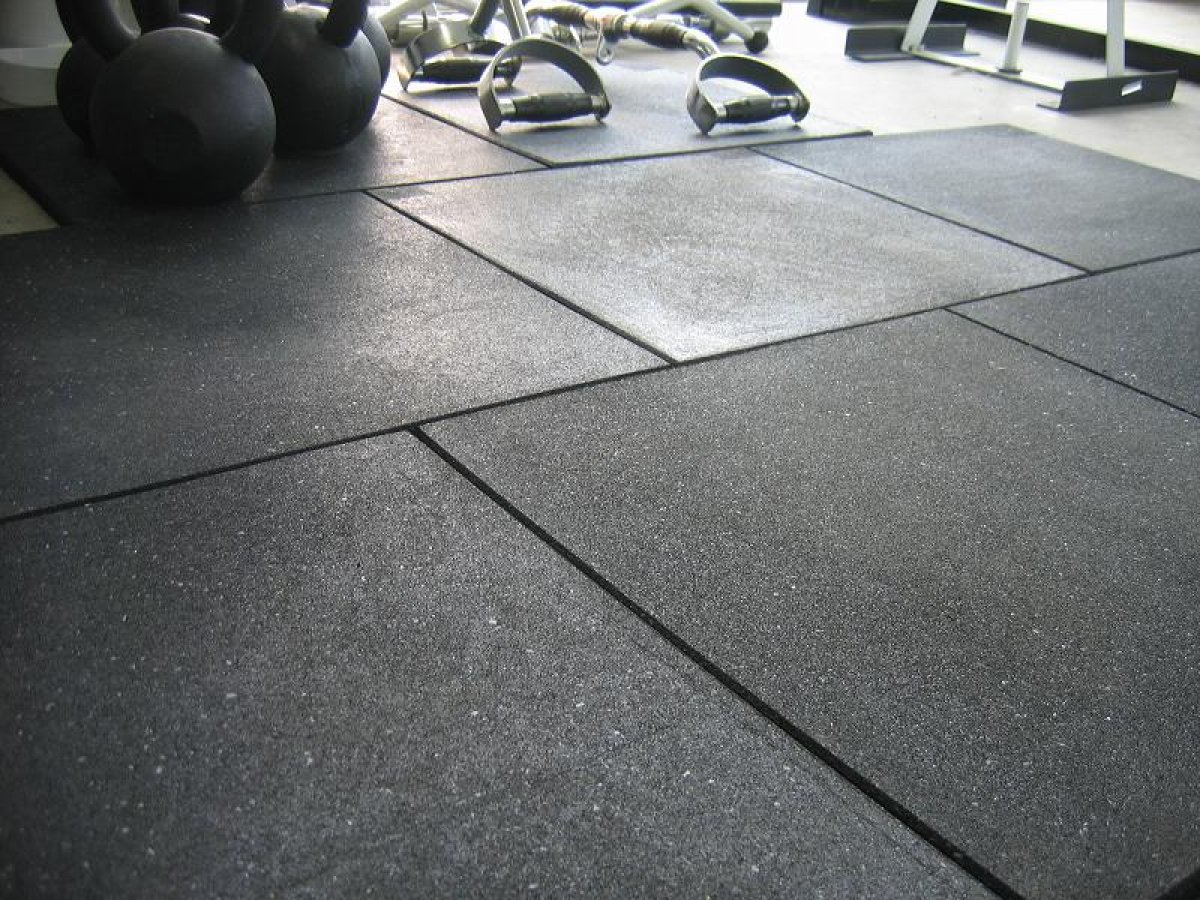
Rubber flooring is a popular flooring option for garage gyms. It is easy to clean and maintain, making it ideal for spaces prone to dirt and sweat. This type of flooring also provides excellent shock absorption during home workouts, reducing the impact on joints.
On the downside, some rubber flooring options for a home gym may emit a strong rubber odor initially, which can be off-putting. Certain materials may not be suitable for heavy equipment or weightlifting activities due to their durability limitations.
- Easy to clean and maintain
- Offers good shock absorption for workouts
- Some options may have a strong rubber odor initially
- Certain materials may not be suitable for heavy equipment or weightlifting
When installing rubber garage gym flooring, ensure that the subfloor is clean, dry, and level before laying down the material. Following the manufacturer’s instructions regarding installation techniques is crucial to ensure longevity and performance. Whether using adhesive or interlocking systems, proper installation methods are key in securing the flooring effectively.
Foam Mats
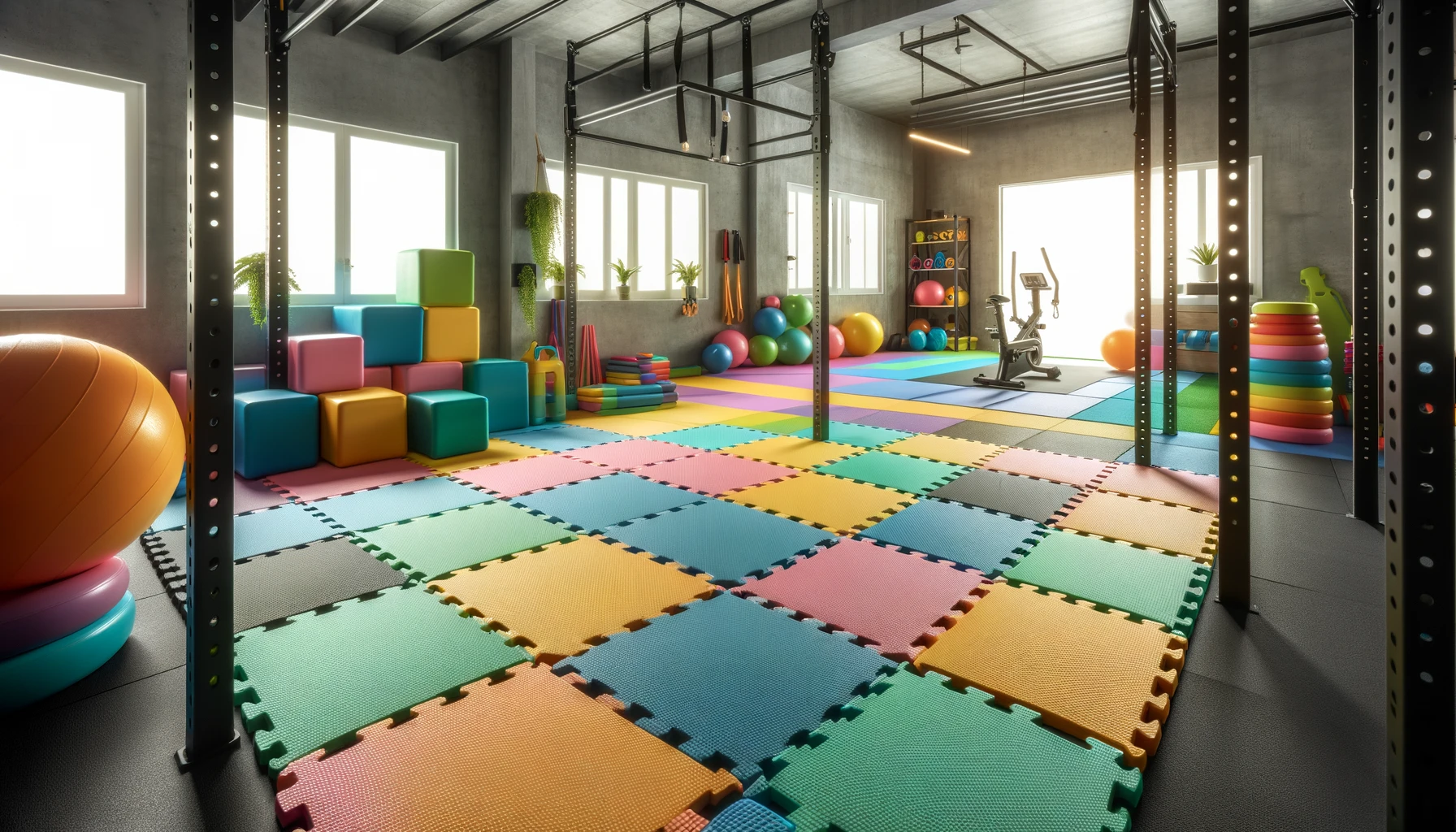
Foam mats are another common flooring option chosen by many individuals setting up home garage gyms. These mats provide cushioning during exercises while being lightweight and easy to move around as needed. However, foam mats might not offer as much durability as other types of garage gym flooring options.
Considering foam mats? Here are some pros and cons:
Pros:
- Provides cushioning during exercises
- Lightweight and easy to move around
Cons:
- May lack durability compared to other options
Looking into vinyl floorings? Let’s delve into its benefits next!
Rubber Flooring Deep Dive
Product Highlights
Rubber flooring for your garage gym comes in various forms like rubber mats, interlocking tiles, and rolled options. Rubber mats are flexible, long-lasting, and absorb impact effectively. On the other hand, interlocking tiles offer simple setup and customization possibilities for home gym flooring.
When choosing a type of flooring for your garage gym, consider factors such as durability, shock absorption capabilities, ease of installation, and customization options. For example:
- Rubber mats: Versatile and durable with excellent shock absorption.
- Interlocking tiles: Easy to install with customizable configurations.
How to Install
Before purchasing home garage gym flooring materials, accurately measure the dimensions of your workout space to ensure you buy the right amount. Prepare the subfloor by cleaning it thoroughly to remove any dirt or debris that could affect the new flooring’s adhesion. Ensure the surface is level before proceeding with installation.
To properly install your chosen rubber flooring option:
- Clean the subfloor meticulously.
- Follow manufacturer instructions precisely for a successful installation process.
- Verify that each piece fits snugly together in case of interlocking tile usage.
How to Clean
Maintaining cleanliness is crucial for prolonging the lifespan of your home garage gym floorings.
- Regularly sweep or vacuum dust and dirt from its surface.
- Deal with spills promptly using a damp cloth or mop.
- For deeper cleaning needs use mild detergent or specialized cleaners suitable for rubber surfaces.
Comparing Options
There are various options available, each with its own set of advantages and considerations. Rubber flooring is known for its durability and shock absorption properties, making it an excellent choice for high-impact workouts like weightlifting. Mats, on the other hand, offer portability and ease of movement, ideal for smaller workout spaces where flexibility is key. Interlocking tiles provide versatility in design and easy replacement if any pieces get damaged.
In terms of budget-friendly choices, rolled rubber flooring stands out as a cost-effective option for setting up your garage gym without breaking the bank. EVA foam mats are another good option for those looking to save money while still ensuring adequate floor protection during workouts. Keep an eye out for sales or discounts on garage gym flooring to make the most of your budget while getting quality materials.
When considering heavy-duty garage gym flooring options, opt for thick rubber flooring designed to withstand intense workouts and heavy equipment use such as weightlifting sessions. High-density foam tiles offer added durability and impact resistance suitable for rigorous home gym training routines that involve jumping or dropping weights. It’s essential to choose garage gym flooring explicitly engineered to endure the demands of intense training sessions safely.
Installation Insights
When setting up your garage gym, ensuring the right installation of flooring is crucial for a safe and effective workout space. Leveling floors is the first step to consider. Utilize self-leveling compounds to address any unevenness in your garage floor before installing gym flooring. If you encounter significant leveling issues beyond minor imperfections, seek professional assistance for extensive repairs. Properly leveled floors play a key role in maintaining stability and safety during home gym workouts.
Handling uneven surfaces requires specific measures to guarantee a secure foundation for your home gym equipment. Opt for interlocking tiles or rubber mats that can adapt to the contours of irregular surfaces, providing a seamless and stable base for your workouts. To address height differences in the subfloor caused by surface irregularities in a home gym, incorporate additional underlayment or padding as needed. Adhering to proper installation techniques is essential in minimizing the impact of uneven surfaces on both the integrity and longevity of your gym flooring.
Pros:
- Ensures stability during workouts
- Enhances safety in the workout area
- Provides a smooth surface for exercises
Maintenance Tips
Cleaning Techniques
Regularly sweep or vacuum your garage gym flooring to remove dirt and debris. A clean floor not only looks better but also prevents wear and tear over time. Using a mild soap or a specially formulated cleaner recommended by the manufacturer can help maintain the quality of the flooring. These cleaners are designed to be gentle yet effective, ensuring that your floor stays in top condition without causing any damage.
Avoid using harsh chemicals on your garage gym flooring, as they can strip away protective coatings and cause discoloration. Opt for cleaning solutions that are safe for the specific type of flooring you have installed. Abrasive scrub brushes should be avoided as they can scratch and mar the surface of the flooring, leading to premature deterioration. By following these cleaning techniques, you can prolong the lifespan of your garage gym flooring and keep it looking its best.
Soundproofing Strategies
Rubber Mats and Foam Underlayments
When setting up your garage gym, incorporating rubber mats or foam underlayments beneath the flooring can significantly reduce noise. These materials act as a buffer, absorbing the impact of weights being dropped during workouts. By cushioning the floor, they help dampen sound vibrations that would otherwise travel through the floor to other parts of your home.
Rubber mats and foam underlayments are easy to install and provide an effective solution for soundproofing your garage gym. They not only minimize noise but also protect both your equipment and flooring from damage caused by heavyweights hitting the ground repeatedly.
Pros:
- Easy installation
- Effective sound absorption
Cons:
- May require occasional replacement due to wear and tear
Acoustic Panels and Soundproof Curtains
To further enhance sound insulation in your garage gym, consider mounting acoustic panels or hanging soundproof curtains on walls shared with living spaces. These specialized materials are designed to absorb sound waves, preventing them from bouncing off hard surfaces like concrete walls.
Acoustic panels come in various sizes and designs, allowing you to customize the look of your gym while improving its acoustics. Similarly, soundproof curtains offer a practical solution for reducing noise transmission between rooms without requiring extensive renovations.
Key Information:
- Acoustic panels improve room aesthetics.
- Soundproof curtains are versatile and easy to install.
Bumper Plates and Weightlifting Platforms
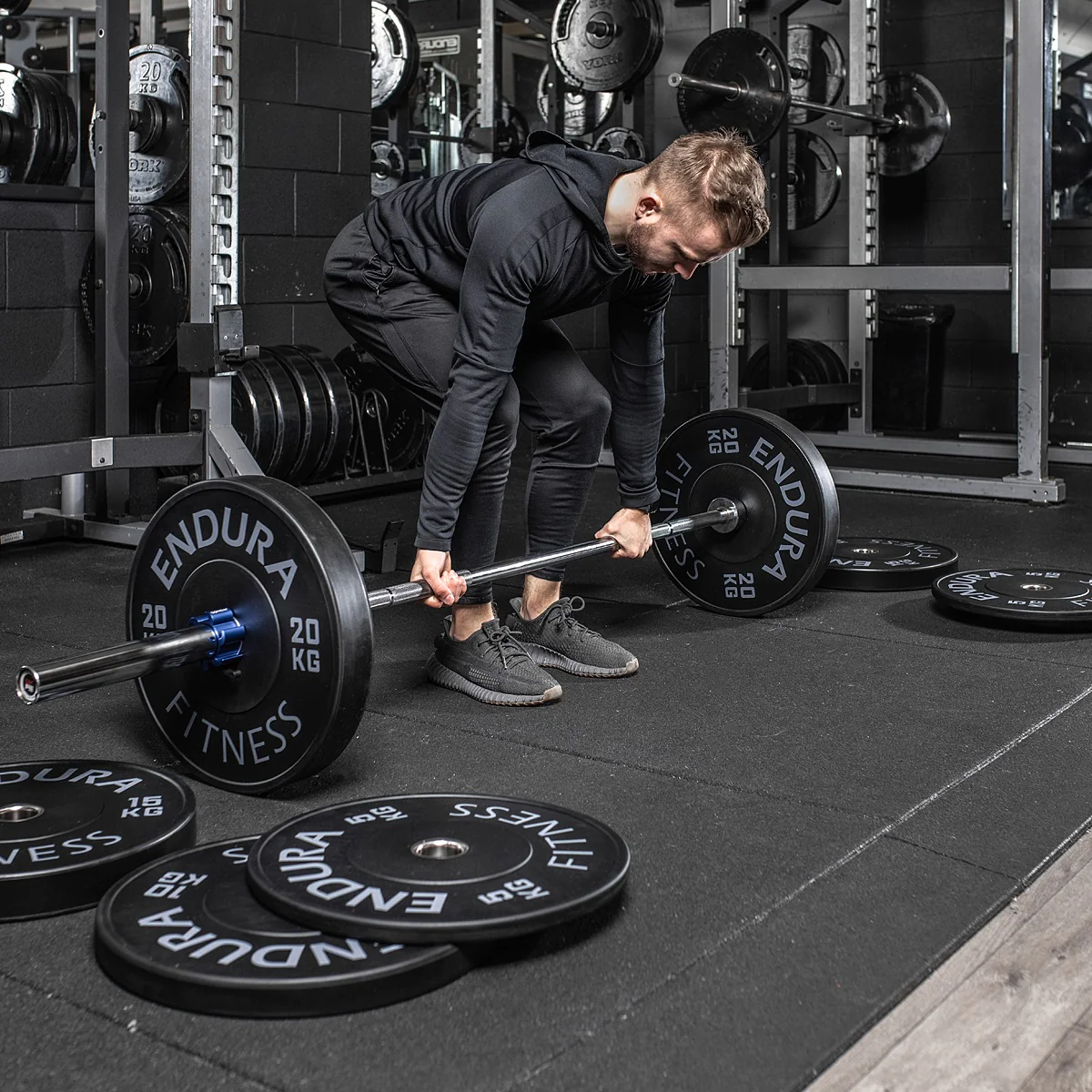
Another effective strategy for minimizing noise in your garage gym is using bumper plates or investing in a weightlifting platform. Bumper plates are specially designed weight plates made of dense rubber that dampen impact when dropped on the floor after lifts.
Weightlifting platforms consist of multiple layers of plywood topped with rubber matting; they provide a dedicated space for lifting weights without causing excessive noise or damaging underlying surfaces like concrete floors.
- Purchase high-quality bumper plates.
- Invest in a durable weightlifting platform.
- Enjoy quieter workouts with reduced noise levels.
Benefits Overview
Impact on Workouts
Garage gym flooring is crucial for creating a safe and effective workout space. Good shock absorption in the flooring can significantly reduce the strain on your joints, especially during high-intensity exercises like jumping or weightlifting. Imagine doing a set of burpees on hard concrete versus a rubber floor; the difference in impact on your knees and ankles is substantial. Certain materials used in garage gym flooring have excellent cushioning properties that help prevent injuries from repetitive movements that put stress on your body.
Moreover, having a stable and level surface provided by quality garage gym flooring enhances your balance and stability during workouts. Picture yourself trying to hold a yoga pose or performing strength training exercises on an uneven surface – it’s not only challenging but also increases the risk of injury due to instability. With proper flooring, you can focus more on your form and technique without worrying about slipping or tripping due to an unstable base.
- Shock absorption reduces strain on joints
- Cushioning properties prevent injuries from repetitive movements
- Stable surface enhances balance and stability during workouts
Longevity and Durability
When investing in garage gym flooring, durability is key for long-term use. Rubber flooring, known for its exceptional durability, offers longevity that can last up to 20 years or even more with proper care. Regular maintenance such as cleaning spills promptly and using appropriate cleaning products can extend the lifespan of your garage gym flooring significantly.
Considering the warranty offered by the manufacturer is essential to ensure long-term durability and protection for your investment. A good warranty provides peace of mind knowing that you are covered if any issues arise with the quality or durability of the flooring over time.
Summary
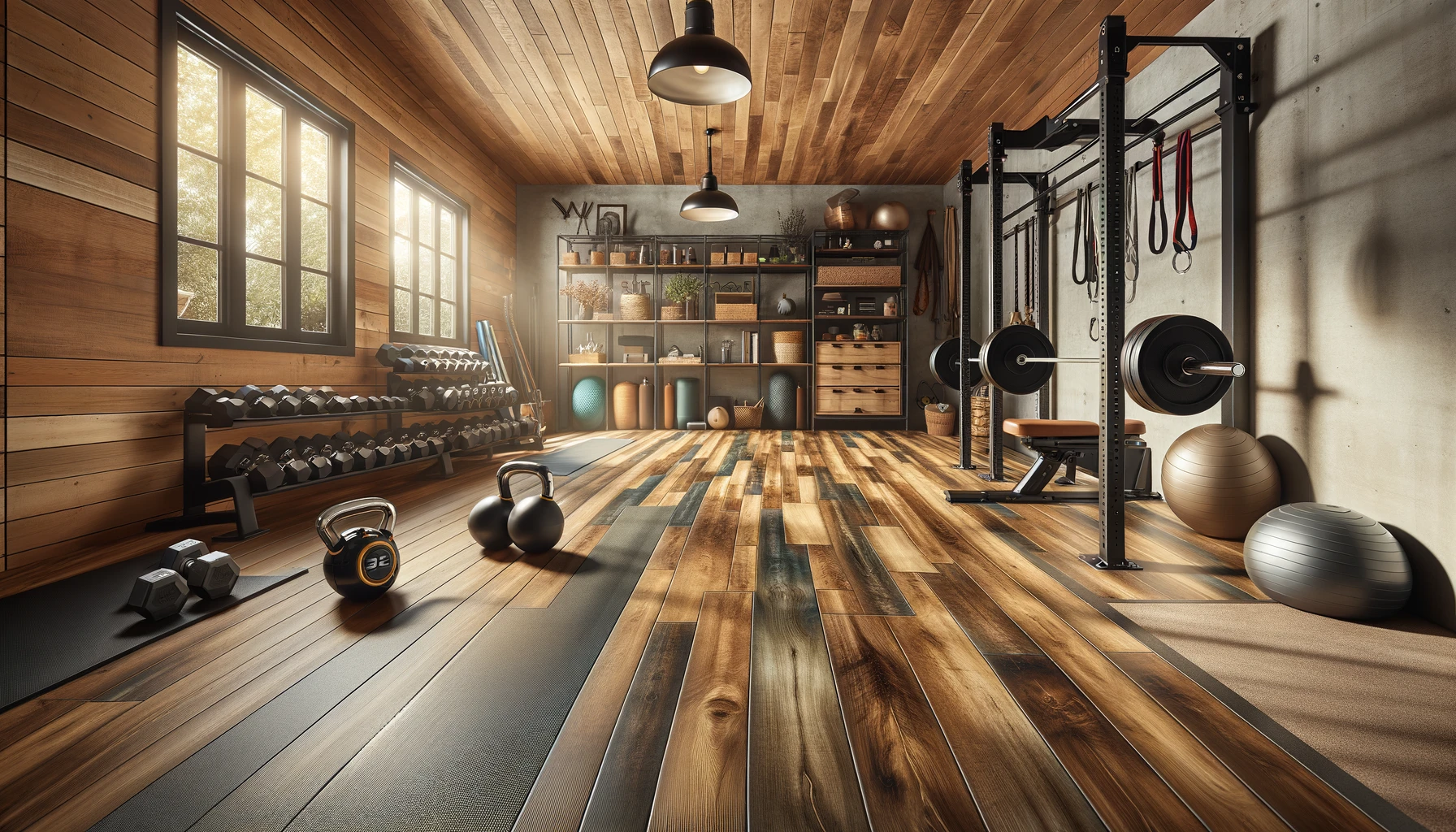
You’ve now got the lowdown on garage gym flooring, from rubber options to installation and maintenance tips. It’s clear that choosing the right flooring isn’t just about looks – it’s about functionality and durability too. So, whether you’re into heavy lifting or high-intensity workouts, make sure your gym floor can take the heat!
Don’t let a saggy surface ruin your fitness game – pick a flooring that can handle your toughest sweat sessions. Now that you’re armed with the know-how, go ahead and revamp your garage gym floor to create a space that’s not just strong but stylish too. Your gains will thank you for it!
Frequently Asked Questions
What are the key factors to consider when choosing garage gym flooring?
When selecting garage gym flooring, consider durability, shock absorption, ease of cleaning, and budget. Ensure it can withstand heavy equipment and high-impact workouts without causing damage to your floors.
What types of flooring are suitable for a garage gym?
Popular options include rubber mats, foam tiles, vinyl rolls, and interlocking tiles. Rubber flooring is often preferred due to its durability and shock-absorbing properties ideal for weightlifting areas.
Why should I opt for rubber flooring in my garage gym?
Rubber flooring offers excellent impact resistance, noise reduction capabilities, easy maintenance, and longevity. It provides a stable surface that protects both your equipment from damage and your joints during intense workouts.
How do I effectively soundproof my garage gym with the right flooring choice?
To minimize noise transfer in your home or neighborhood while working out in the garage gym, consider using thick rubber mats or tiles designed specifically for sound absorption. These materials help dampen vibrations caused by dropping weights or exercising vigorously.
What are some essential maintenance tips for prolonging the lifespan of garage gym flooring?
Regularly clean your floor with a mild detergent and water solution to remove sweat stains and dirt buildup. Avoid using harsh chemicals that could deteriorate the material over time. Inspect for any wear-and-tear signs periodically to address them promptly.
